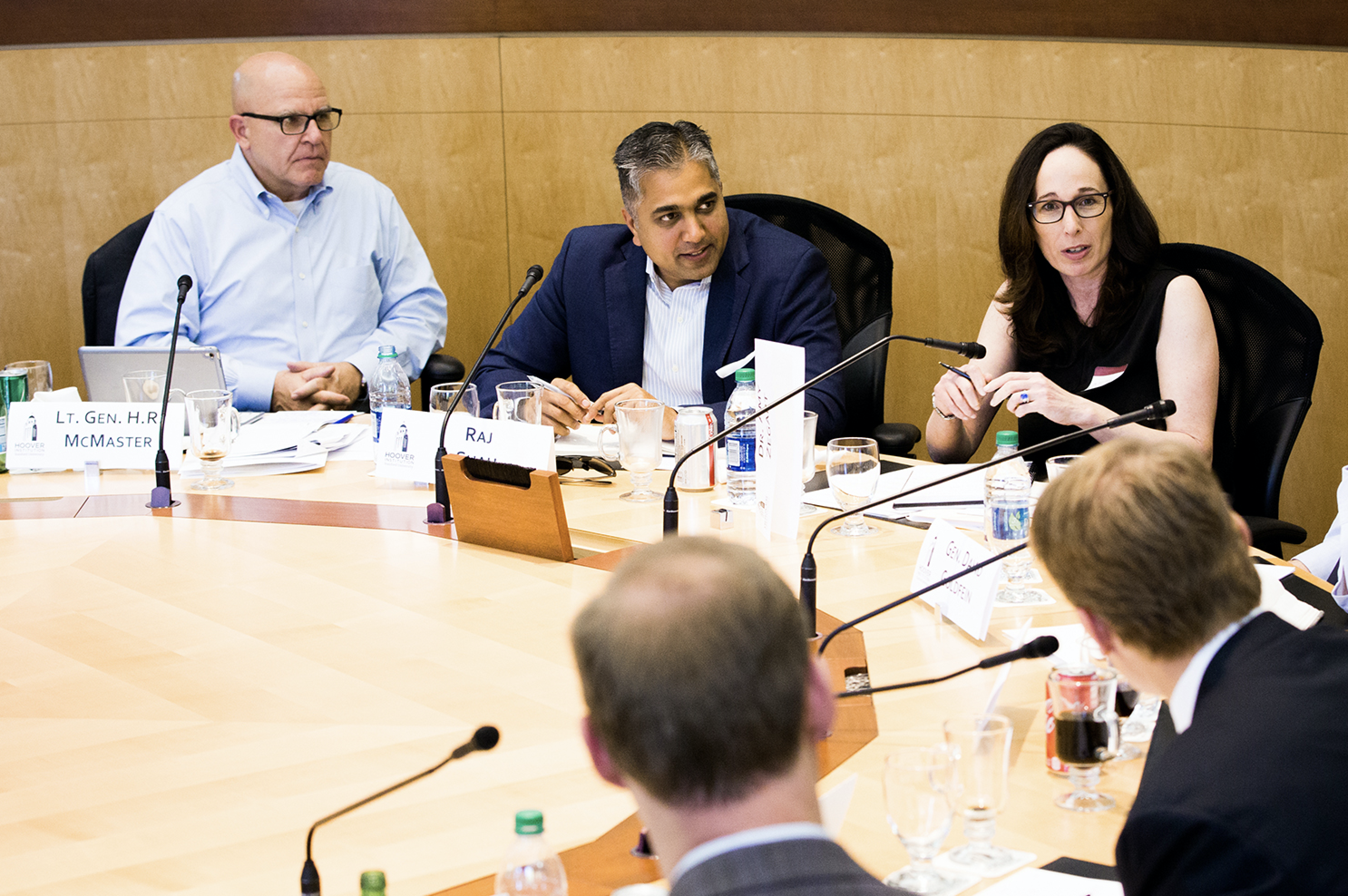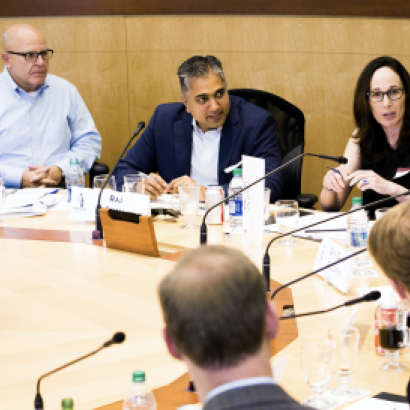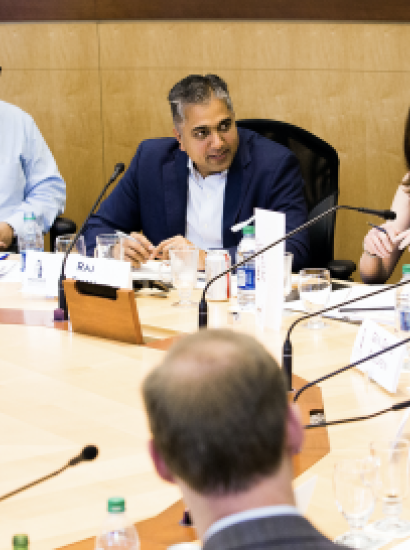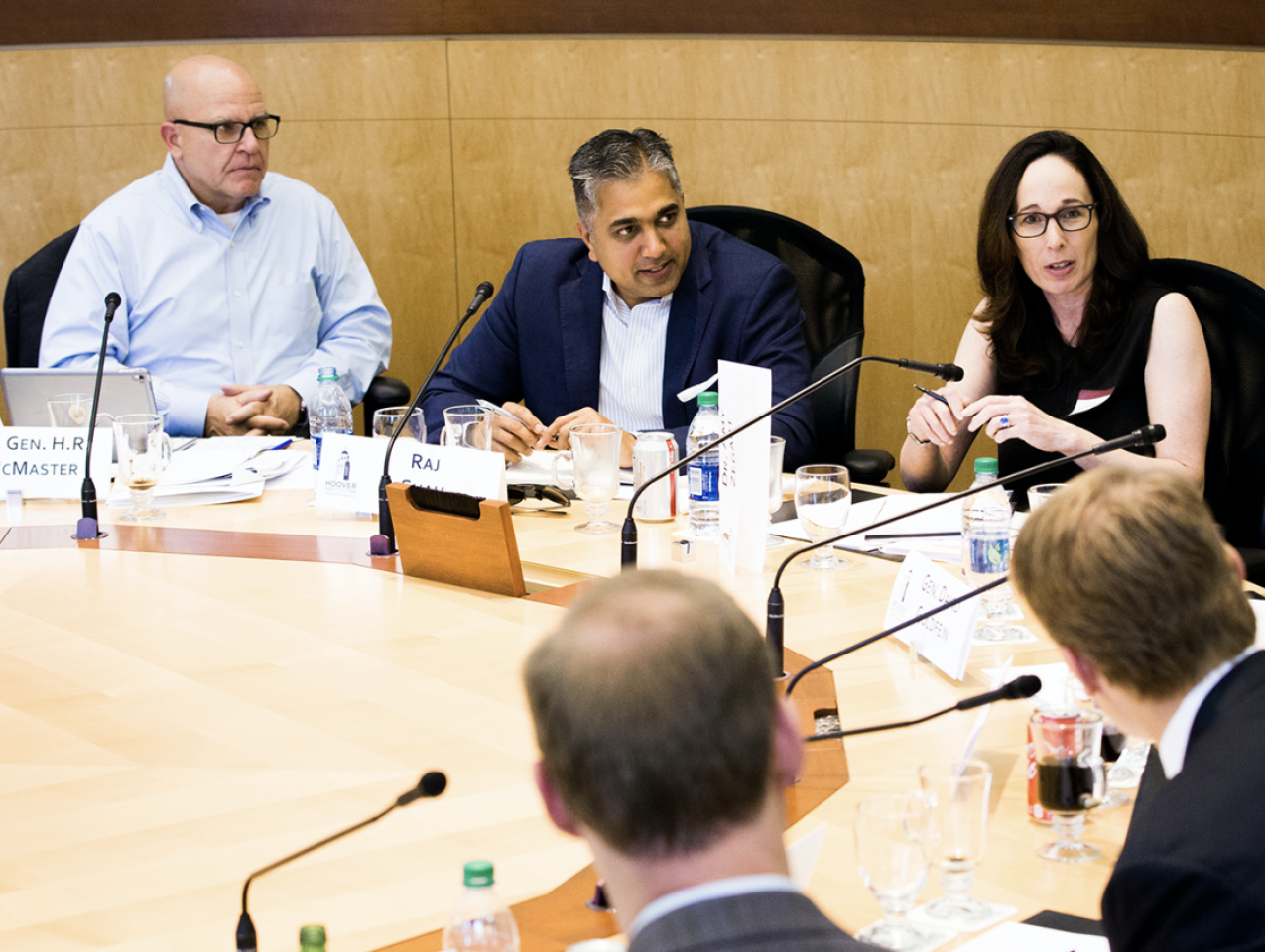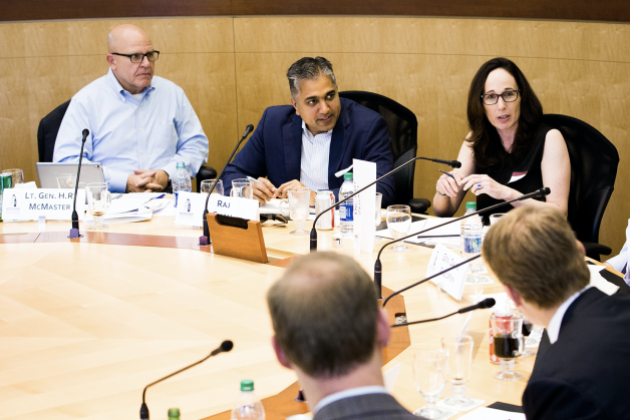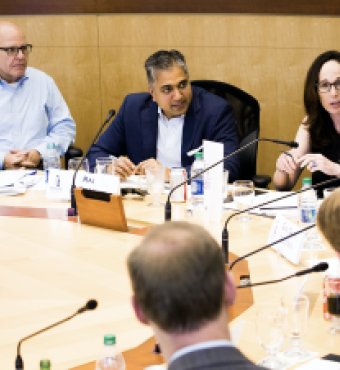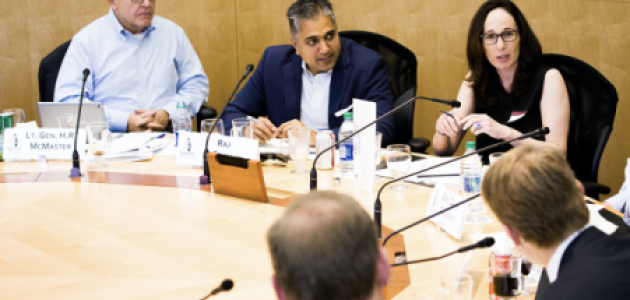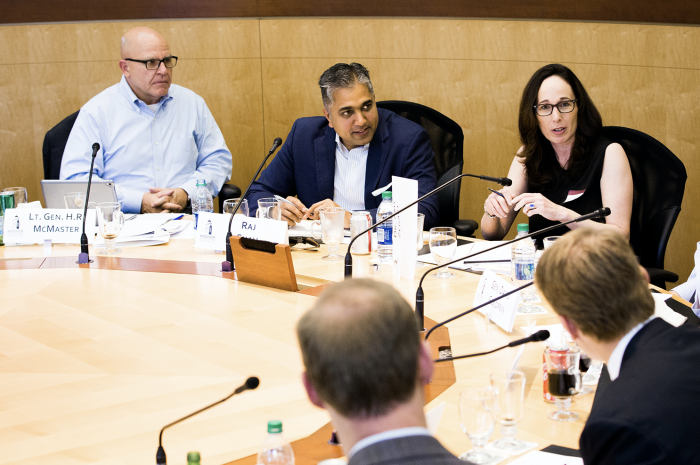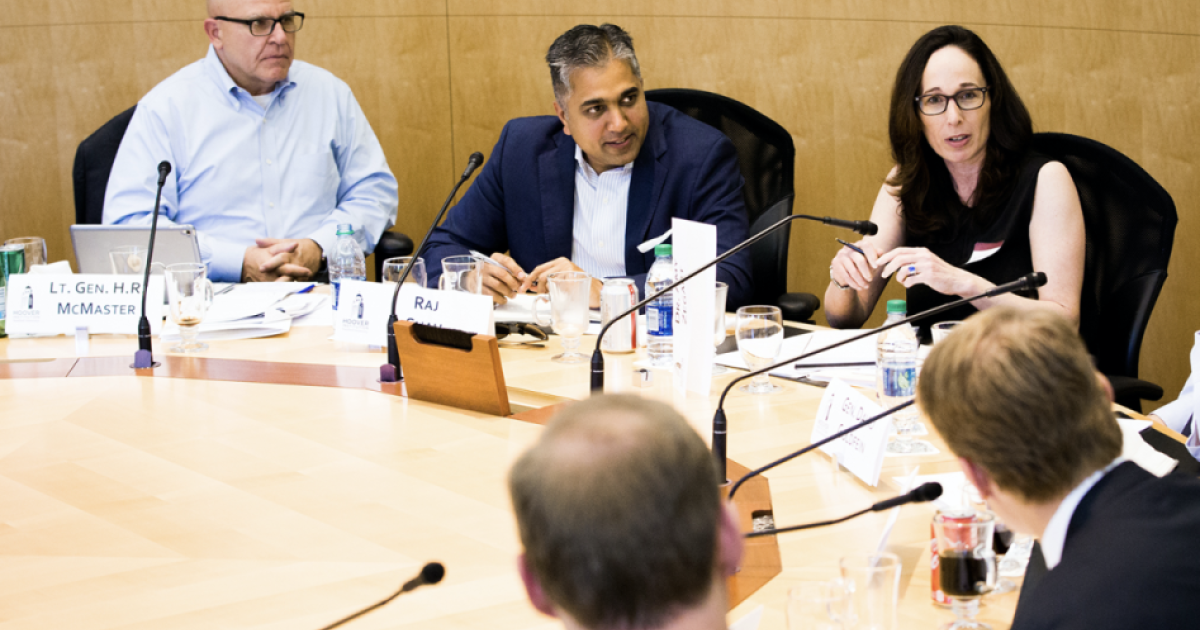Cultivating the often rocky relationship between Silicon Valley and the US Department of Defense was the topic of a recent Hoover Institution symposium.
The May 22-23 “Tech Track II Symposium: Restoring Essential Bonds Between the Department of Defense and the Silicon Valley” brought together dozens of Hoover scholars, entrepreneurs and defense experts to discuss issues inherent to their relationships. It was a unique moment for both communities, and optimism and positive talk abounded while real challenges were candidly acknowledged.
Cultural and policy divides between the US tech and defense communities have overshadowed a need to defend the democratic world order, not just the U.S. and its allies, but Western industry, from an aggressive China that wants to change the rules of the international order, according to many participants.
Amy Zegart, a co-host of symposium along with Hoover’s H.R. McMaster, and Raj M. Shah, recently co-authored with Kevin Childs an article in The Atlantic about the increasing divide between Silicon Valley and Washington, D.C.
Zegart said, “This workshop takes our efforts to bridge the Washington-Silicon Valley divide to the next level. Two ingredients were vital: candor (about why the relationship has been so troubled) and commitment to solving problems together. There was tremendous energy and enthusiasm on all sides about moving forward to turn this initial set of discussions into an ongoing initiative with deliverables and results. Stay tuned.”
McMaster said, “The Tech Track II conference was a tremendous success thanks to the leaders from government, academia and the tech sector who attended and shared their perspectives. The participants departed with a common understanding of what is at stake and the need for an improved relationship to preserve peace, promote prosperity, and protect our freedom and way of life. And the participants identified concrete steps to improve collaboration to maintain America’s competitive advantages while maximizing the benefits of emerging technologies and protecting against dangers.”
He added, “In its hundredth anniversary year, the Hoover Institution continues to play a central role in fostering the relationships and promoting the ideas foundational to our free society.”
Shah said, “The bonds between citizens and institutions residing in our nation's technology and government eco-systems are critical to the preservation of open societies worldwide. The off the record event brought together leaders from around the world to focus on tangible solutions to improve American competitiveness. Hoover and the Tech Track II effort will serve a convener and champion towards the implementation of those solutions over the next year.”
Hoover’s Robert and Marion Oster National Security Fellows Program sponsored the conference.
Themes and next steps
Discussions revolved around a central question – how can we improve cooperation between tech companies and national security officials to ensure that the United States maintains advantages that are critical to preserving peace, fostering prosperity, protecting civil liberties, and advancing human rights worldwide?
This is important, because China follows a strategic plan aimed at achieving economic and military dominance, while the relationships between the US innovation base and national security leaders have eroded in recent years. Silicon Valley, where key technologies are continually developed and introduced to the market, plays a hugely decisive role in the national security-tech world relationship.
Unfortunately, a negative narrative between the US government and private technology companies has arisen, thereby hindering collaboration on important issues and technology projects, and ultimately, efforts to bolster national security and prosperity.
The purpose of the Tech Track II Symposium was to identify specific initiatives that could be implemented, and as a result, improve cooperation between the US government and tech innovators with the goal of strengthening security, peace and economic well-being for all partners involved.
Participants encouraged the US to lead the world in innovation and create an offensive strategy that focuses on harnessing collaboration across industry, government and academia.
China is using a military-civilian fusion strategy to invest in innovation and technologies with the goal of leapfrogging the US in key emerging industries vital to national security. To do so, the Chinese Communist Party engages in cyber espionage, forcing Western companies to share their intellectual property in order to do business in China, and operates a high level of strategic investment in emerging technologies, including artificial intelligence.
The US struggles to leverage private sector resources for national security purposes. For example, while US defense-related research and development (R&D) made up more than one-third of global R&D in 1960, it has fallen dramatically, and comprised only 3.7 percent as of 2016.
Participants agreed that talking more and working together is the best way to bridge the Silicon Valley-Washington divide. Three divides exist – a civil-military relations gap between the protectors and the protected; a training gap between leaders in Washington and leaders in Silicon Valley; and a third divide that is generational. In Washington, it was explained, power runs vertically and rests in the hands of the experienced, often older. In Silicon Valley, power runs horizontally and rests in the hands of the talented, often younger.
The relationship is in need of repair. In the last couple of years, Google executives canceled an artificial-intelligence project with the Pentagon and refused to even bid on the Defense Department’s Project JEDI, an important $10 billion IT-improvement program. At the same time, Google has flirted with China, helping their government on different projects, though that elicited heavy criticism from even its own employees. Meanwhile, Facebook executives have made many trips to Capitol Hill to testify about fake news and the 2016 election, while trying to deny, delay, and deflect regulation and silence critics.
What can be done? To begin, the Pentagon needs a messaging overhaul. Engineering students today believe they can achieve large-scale change faster and better outside the government than working in it. Instead of focusing on a pay vs mission tradeoff, the DoD should communicate and off young people and college students opportunities for impact that don't require a lifetime of moving up through the hierarchy. Also, tapping the best young engineers against the toughest challenges early on instead of doing it through seniority would resonate well.
Government needs to get creative about talent and brainpower, participants said. Imagine a Technology Fellows Program that would select the 50 most talented American engineering students graduating from college for a prestigious, one-year, high-impact stint in government service. They could work for senior leaders in the military and gain invaluable experience, while showing those leaders what young people offer and are thinking about.
MEDIA CONTACT:
Clifton B. Parker, Hoover Institution: (650) 498-5204, cbparker@stanford.edu







